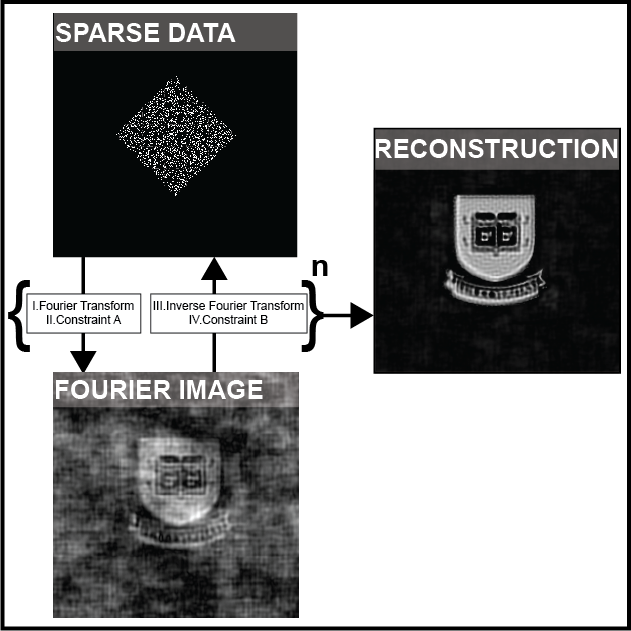.png) |
Quadratic Echo Line-Narrowing
Our lab has developed the quadratic echo pulse sequence to achieve extreme line-narrowing (up to a factor of 70,000) in the NMR of solids. The quadratic echo pulse sequence uses the fact that during the time in which non-zero, periodic, hard pi-pulses act, the rf Hamiltonian can be put to good use in controlling spin coherence in ways that would otherwise be missed if the pi-pulses are approximated as delta functions. This novel sequence developed in our lab refocusses both Zeeman and dipolar terms in the spin Hamiltonian and even works in solids where both these terms are on the same order. We have successfully applied our pulse sequence to narrow spectra for C-13, Si-29, P-31 and are actively seeking other systems to apply the sequence.
|
Imaging Hard and Soft Solids
Our group uses the quadratic echo line-narrowing sequence to image solids in which the dipolar coupling(broadening) between nuclear spins would usually limit the spectral resolution and thus make MRI practically unattainable. The Barrett lab has expertise in using the quadratic echo line-narrowing sequence for the imaging of P-31 in ex-vivo bone hydroxyapatite and membrane bound P-31 in ex-vivo brain to resolutions of a few hundred micrometers. We are actively pursuing:
|
P-31 density image of porcine rib where the surface corresponds to pixels with the same value. |
 |
Advancing Spectral Reconstruction with Undersampled Data Sets
|
Custom NMR/MRI Probe Design and Construction
The Barrett group builds custom high Q probes for solid-state NMR and solid-state MRI, including dual-channel probes for double resonance experiments. Members of the Barrett lab have designed and machined probes including:
|
 (MRI probe for Bruker Mini 4T) |
